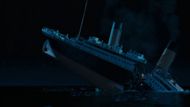If anyone has given us an almost accurate picture of what happened the night the RMS Titanic sank, it's Roy Ward Baker's 1958 film, A Night to Remember. A boy saw that film, took inspiration, and almost four decades later gave us another film, Titanic. James Cameron even copied some dialogue from it as original, probably because he didn't want to tweak some elements from something that would become one of his best films.
The ship is sitting at the seabed and is slowly succumbing to Mother Nature, and before it finally becomes a pulp in the ocean, scientists are doing whatever they can to give us a better picture of the infamous incident that sank the unsinkable Titanic.
Thanks to the technology that gives us such a picture, and a recent analysis, as reported by the BBC, gives us a couple of major inaccuracies about the boiler room and its impact in the James Cameron movie.
The light didn't go off on the RMS Titanic
Though it has been told before by the surviving passengers, this new study adds more strength to the fact that the lights never went off on the ship. An analyst, Parks Stephenson, says of the ship's engineers that,
"They kept the lights and the power working to the end, to give the crew time to launch the lifeboats safely with some light instead of in absolute darkness. They held the chaos at bay as long as possible, and all of that was kind of symbolised by this open steam valve just sitting there on the stern."
In the scene when the ship has almost broken into two halves, people are now in terror, and the crew is holding their hands together to stay intact so they don't fall. A man runs up and tries to turn an electric switch, but becomes subject to a shock, dying on the spot in the film.
The following scene shows a half-sunken ship with the front portion of it tipping outside the ocean in lights, and within a snap, they went off, and everything's dark. It is nothing short of a horror scene, as a close-up shows struggling passengers in water.
The kind of punctures and the impact they had on the ship

There's a simulated image of the ship where the bottom part of the hull is shown to have the impact, like some sharp object cut through the metal. What's interesting is, as the BBC article notes, the punctures were likely to be the size of some A4-size papers.
In the movie, the crew is trying to put in their best efforts after confirming an iceberg ahead. However, they fail to prevent the impact. Right after Jack and Rose's romance is interrupted, we see from inside the metal being damaged, sending the water inside of RMS Titanic.
The dents we see there certainly look bigger than A4-sized papers that are caused by the impact.
RMS Titanic sank on April 12, 1912, and of its estimated 2,224 passengers, some 1,500 lost their lives in the event. Following that, the British and American Boards of Inquiry recommended that ships carry lifeboats for every single passenger on a ship.
Also Read: Titanic's most iconic scene was actually a mistake that nobody knows about
Love movies? Try our Box Office Game and Movie Grid Game to test your film knowledge and have some fun!
